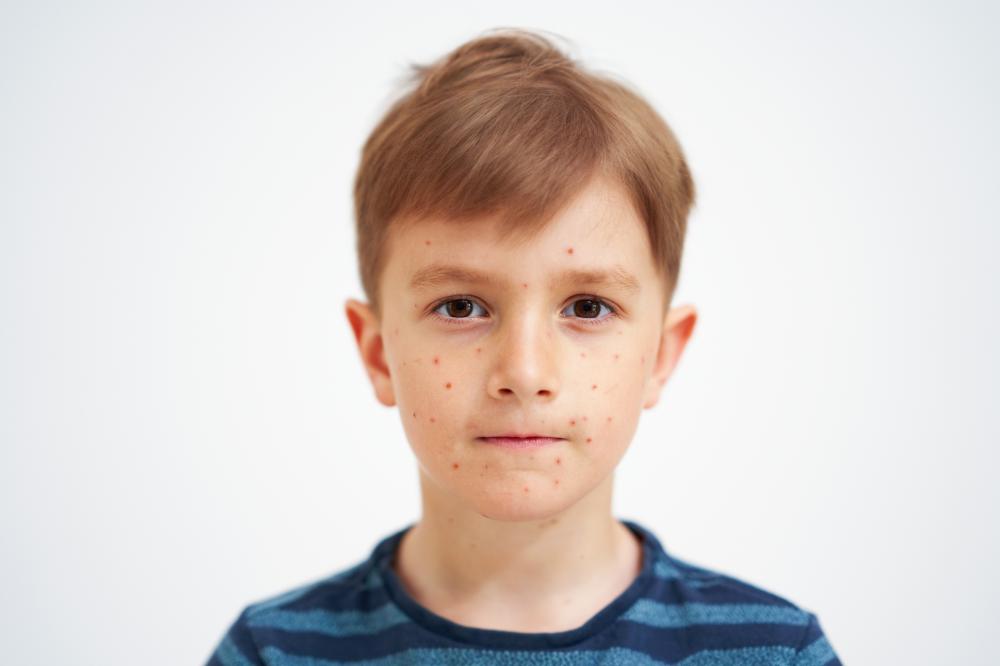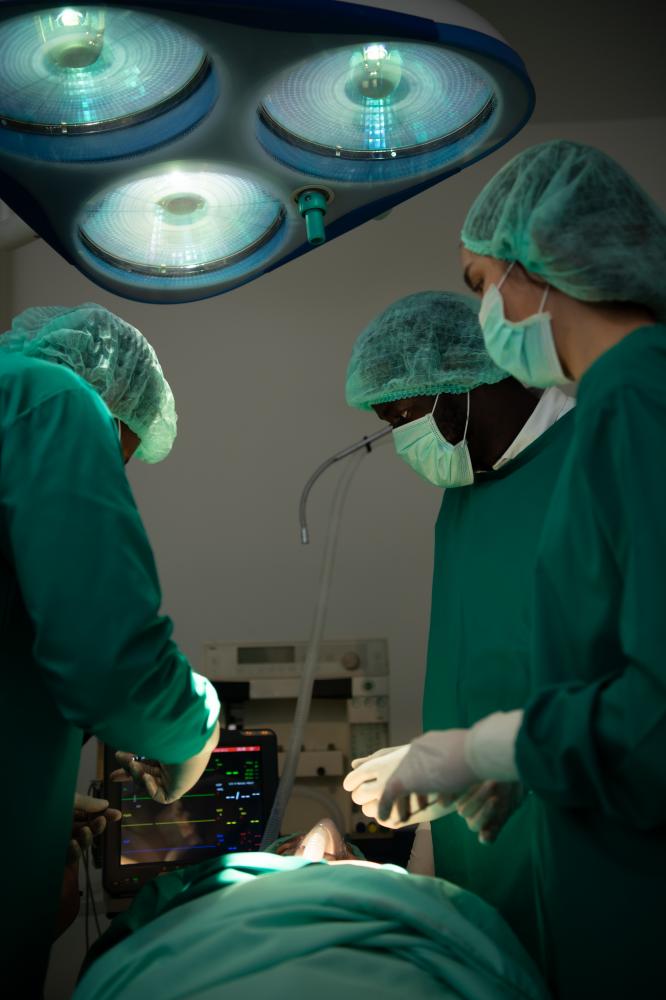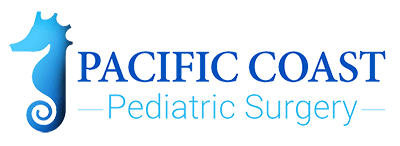Table of Contents
Understanding Hirschsprung Disease in Children

At Pacific Coast Pediatric Surgery, we encounter many families grappling with the diagnosis of Hirschsprung Disease in Children. This complex condition is characterized by an absence of nerve cells in the muscles of part or all of the large intestine, causing difficulties in passing stool. Hirschsprung Disease in Children can be daunting to understand, but as an expert in pediatric surgery, I strive to illuminate this path for my patients and their families.
Typically, Hirschsprung Disease in Children presents early in life, sometimes detected soon after birth when a newborn struggles with bowel movements. The signs are often straightforward: a swollen belly, vomiting, and failure to pass meconium. These are the red flags that lead us to investigate further, usually prompting an array of diagnostic tests like an abdominal x-ray or a rectal biopsy. These initial steps are crucial for confirming the presence of the disease and planning the appropriate surgical response.
Surgical Treatment Approaches
At our Thousand Oaks clinic, the heart of our treatment philosophy is tailored care, especially when it comes to surgical intervention. The standard treatment we consider for Hirschsprung Disease in Children is a pull-through procedure. This surgery involves removing the affected segments of the intestine to re-establish normal bowel function. While this may sound intimidating, rest assured that advancements in pediatric surgery allow us to perform these procedures with precision and care. Learn more about the Nuss procedure when you contact our pediatric hernia specialist Los Angeles.
Our minimally invasive techniques minimize scarring and recovery time, a consideration that deeply matters to parents. As a physician who’s been in the shoes of a worried parent, I share a common ground with my patients’ families. Each stitch is placed with an intention forged from personal experience and professional expertise.
In some cases, a temporary ostomy may be necessary, providing relief and stability before a more definitive procedure. As a surgeon, I am continually amazed by the resilience of my young patients and their capacity for healing.
Postoperative Care and Management
Postoperative management is a critical phase in the journey of Hirschsprung Disease in Children. It’s not just about the surgery; it’s about the aftercare that ensures long-term well-being. My team and I provide comprehensive support to our patients, from managing pain and nutrition to monitoring for any post-surgical complications like enterocolitis.
Parents become our partners in this phase, and it’s their vigilant observations that often make the difference. They learn the signs that indicate their child needs medical attention, and we’re here for them, day and night, ready to intervene should the need arise. My dedication to this postoperative period stems from my belief that the success of a surgery is measured not just by the procedure itself, but by the quality of life that follows.
Advancements in Treatment and Family Support
I take pride in staying at the forefront of pediatric surgery, ensuring that my practice at Pacific Coast Pediatric Surgery incorporates the latest research and the most effective techniques. The world of Hirschsprung Disease in Children has seen significant advancements, and it is my privilege to bring these to the families I serve. Personalized medication regimes, innovative surgical procedures, and holistic care approaches are all part of our evolving toolkit.
Supporting families extends beyond the operating room. It means providing a comforting word, a detailed explanation at the end of a long day, or simply being present in moments of uncertainty. When I operated on children in China, far from their home comforts, I learned the value of a surgeon’s compassionate presence alongside their technical skills. That’s an ethos I’ve carried back to Thousand Oaks and into every interaction within our clinic walls.
The road following a diagnosis of Hirschsprung Disease in Children may be complex, yet with the right medical partnership, coping with and overcoming this condition is entirely possible. Our doors and hearts are open to every child and family facing this challenge, offering a blend of top-tier medical care and heartfelt support.
Community Engagement and Education
Community education is vital for diseases like Hirschsprung Disease in Children. Awareness can lead to early diagnosis, which is crucial for a positive outcome. We host seminars and provide resources to educate not just medical professionals but also caregivers and educators. It’s important to recognize the symptoms early and understand the potential complications like infection and nutritional deficiencies.
Empowerment through education is a responsibility we take seriously. By sharing our knowledge, we aim to foster a community that’s well-equipped to support children with Hirschsprung Disease. There’s immense power in a community that understands and rallies around its members, and every day we strive to bolster that collective strength.
Understanding Hirschsprung Disorder in Children
At Pacific Coast Pediatric Surgery, our first-hand experience has shown that Hirschsprung Disorder in Children is a complex condition that requires a compassionate and skilled approach. Hirschsprung Disorder in Children is a congenital disease characterized by an absence of nerve cells in parts of the lower intestine, which can lead to severe constipation and intestinal blockages. It’s a condition we often diagnose early on, as symptoms typically manifest shortly after birth.

Hirschsprung Disorder in Children often presents as an inability to pass stool within the first days of life. Newborns may show signs of abdominal swelling, vomiting, and diarrhea – symptoms that signal a red flag to pediatric surgeons like us. In our practice, we emphasize early detection and intervention. We collaborate with families to closely monitor these symptoms, understanding their distress and the urgency of effective treatment.
Our approach is always tailored to the individual. Some children may have only a short segment of their intestine affected, known as short-segment disease. In contrast, others may have long-segment disease, which involves more extensive parts of the intestine. The specific manifestation of the disorder guides our surgical strategy, aiming always to preserve intestinal function and ensure a better quality of life for our little patients.
Diagnosis and Treatment Pathways
Diagnosing Hirschsprung Disorder in Children involves a blend of state-of-the-art technology and the honed instincts of seasoned professionals. In our clinic, we utilize tests like contrast enemas and rectal biopsies to reveal the extent of nerve cell absence. These diagnostics are critical in crafting a personalized treatment plan that addresses each child’s unique needs.
The primary treatment for Hirschsprung Disorder in Children is surgical. The affected section of the intestine is removed and the healthy parts are reconnected. My team and I are adept at performing these intricate surgeries with a precision that minimizes recovery time and maximizes outcomes. We offer laparoscopic options when suitable, which are less invasive and allow for quicker healing. In my years of service, I’ve seen the remarkable resilience of children who undergo these procedures, and their ability to return to normal bowel function post-surgery is our greatest reward.
We understand, however, that the journey doesn’t end with surgery. Postoperative care is a critical component of Hirschsprung Disorder treatment. We guide parents through the recovery process, addressing any complications such as constipation or enterocolitis, an inflammation of the intestine. The postoperative phase is seen as a continuum of care that ensures children not only survive but thrive after surgery.
Living with Hirschsprung Disorder
In the sanctum of our clinic, the conversations I’ve had with parents reveal the emotional and physical toll Hirschsprung Disorder in Children can take on a family. It’s not just about managing a medical condition; it’s about nurturing a child’s overall wellbeing. Nutritional support and regular follow-ups are just as vital as the surgical procedures themselves. Our team is committed to educating families on dietary needs and the importance of hydration, especially for children who have had portions of their intestine removed.

We pride ourselves on offering a supportive network for families grappling with Hirschsprung Disorder in Children. Our circle of care extends beyond the operating room. We walk parents through the challenges of postoperative care and continue to be a pillar of support as children grow and their needs change. With every child we treat, we strive to reinforce a life of normalcy and joy, allowing them to participate fully in the adventures of childhood.
Of all the conditions we treat at Pacific Coast Pediatric Surgery, Hirschsprung Disorder in Children stands out as an area where our expertise and empathy align to make a tangible difference in the lives of our patients. Our goal is not just to treat a disorder, but to instill hope and facilitate a journey towards health and happiness for every child we have the privilege to care for.
How will you know that the child has Hirschsprung’s disease?
Identifying Hirschsprung’s disease in a child often stems from observing clinical symptoms which are typically apparent shortly after birth. Babies with Hirschsprung’s may struggle with bowel movements and fail to pass meconium, the first stool, which is usually a sign that prompts further evaluation. They might also show symptoms like a swollen belly and vomiting. At Pacific Coast Pediatric Surgery, we utilize a combination of diagnostic tests, such as an abdominal x-ray, which can show bowel obstruction, and a rectal biopsy, the definitive test that detects the absence of nerve cells in the intestinal wall. These diagnostic tools help us confirm the presence of Hirschsprung’s disease and guide us to formulate a treatment plan for Hirschsprung pediatric surgery catered to the child’s needs.
What is the life expectancy of someone with Hirschsprung’s disease?
The outlook for children with Hirschsprung’s disease has improved greatly with medical advancements. After receiving timely and appropriate surgical treatment, children usually go on to lead normal, healthy lives. It’s essential, though, to recognize and manage potential postoperative complications such as enterocolitis. With diligent monitoring and proper medical care, such as that provided at our clinic, the life expectancy for someone with Hirschsprung’s disease can be comparable to the general population. However, ongoing follow-up with a specialist is often necessary to address any long-term issues related to bowel function.
What color is Hirschsprung’s disease poop?
The stool color in babies with Hirschsprung’s disease can vary, but it generally isn’t as different in color as it is in consistency and frequency. Typically, a newborn should pass meconium within the first 48 hours after birth. If a baby has Hirschsprung’s, this might not happen, or the stool may be unusually thin or even watery if an intestinal blockage isn’t complete. In cases of Hirschsprung-associated enterocolitis, which is a serious complication, the stool might be dark, bloody, or explosive when the baby finally passes it. Any abnormality in color or consistency warrants immediate medical attention and can be an indication of the disease or associated complications.
Can Hirschsprung’s be cured?
Hirschsprung’s disease can be effectively treated with surgery, which involves removing the diseased segment of the bowel and reconnecting the healthy portions. This surgery typically provides long-term relief and a return to normal bowel function. At Pacific Coast Pediatric Surgery, we use advanced, minimally invasive techniques to perform these delicate procedures. While surgery is considered curative, some children may have ongoing issues such as constipation or incontinence, and will benefit from long-term management strategies and support. The goal is not just to correct the physical condition but also to ensure the child can enjoy a full, active life.
Resources on Hirschsprung Disease in Children
- Centers for Disease Control and Prevention (CDC): Hirschsprung’s Disease – Provides an overview and facts about Hirschsprung’s Disease, including causes, treatments, and research.
- MedlinePlus: Hirschsprung Disease Genetics – Offers information on genetic aspects, the biology behind the disease, diagnosis, and genetic counseling.
- National Institute of Diabetes and Digestive and Kidney Diseases (NIDDK) – Provides comprehensive information on symptoms, diagnosis, treatment, and ongoing research for Hirschsprung Disease.
- National Organization for Rare Disorders (NORD): Hirschsprung Disease – Contains detailed information on symptoms, causes, populations affected, and resources for Hirschsprung Disease.
- American Academy of Pediatrics: Hirschsprung Disease – A resource for parents with information on the disease, treatment options, and postoperative care from the American Academy of Pediatrics.
- Johns Hopkins Medicine: Hirschsprung Disease – Provides an in-depth look at the disease, including diagnosis, treatment, and managing the condition.

